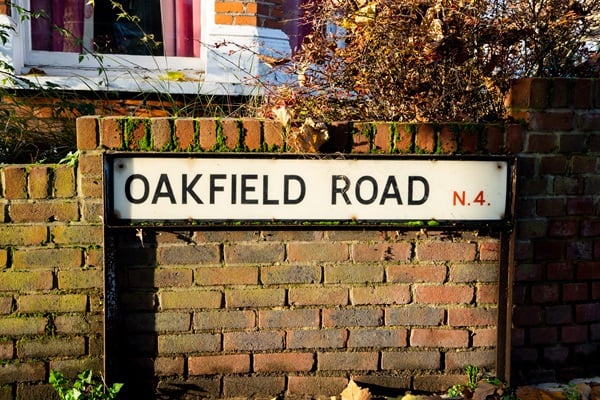2023 has been a year defined by extremes, whilst mortgage rates rates peaked earlier in the year, with the average rate for a two-year fixed standing at 6.86% – house prices reported their fastest fall in fourteen years as demand among buyers continued to recede.
Within the private rental sector, supply and demand imbalances persisted across the UK’s largest cities amidst a record number of landlords leaving the market, citing the sky-high costs associated with their properties. This has contributed to a sustained increase in rents across Britain, as well a growing number of bidding wars between tenants.
David Hannah, Group Chairman of Cornerstone Tax, the UK’s leading property tax advisory, asserts that addressing the following three policy areas will prove essential in restarting the UK’s housing market in the new year, encouraging interest among prospective homeowners and easing the burden currently present in the rental sector.
Interest rates
The BoE’s most recent decision to continue holding interest rates at 5.25% should come as welcome news to those with a keen eye on the mortgage market. In the month’s following the initial decision to freeze increases to the base rate, the market has witnessed a limited recovery, with the UK’s top lenders pursuing a proverbial “race-to-the-bottom” resulting in the average cost of a two-year fixed falling below 6% for the first time in June.
Read more related news:
85% of homes in Spain will be unsellable and unrentable by 2033
Scotland and Northern Ireland leading UK property value growth
Barclays reduces fixed rates by up to 0.43% which is ‘surprising in the days up to Christmas’
Inflation falls to lowest level in two years, but what does this mean for the property market?
However, with the latest inflation figures from the ONS reporting that the rate of price increases has fallen below 4% for the first time in two years – David Hannah asserts that the BoE ought to look towards cutting the base rate in the new year, in a bid to prevent a collapse in consumer demand and encourage lenders to pursue further cuts to mortgage rates.
David Hannah said, “November inflation figures and mortgage approvals should indicate an overall cooling off of the UK economy which, if we are to avoid a recession next year, must be acknowledged by the BoE and, in an effort to avoid a sudden crash of inflation, will increase pressure on the MPC to start reducing interest rates sooner rather than later.
“Economies have momentum, with the rate of inflation continuing its downward trajectory towards the BoE’s threshold of 2% – the MPC must look ahead to the new year and start thinking about the optimum time to cut rates. Research from Rightmove last week found that housing prices are tipped to continue falling by the end of the new year, implying that prospective buyers will still be put off by high mortgage rates. I’d urge the MPC to seriously consider cutting the interest rate in their next meeting, even a reduction by a quarter percentage point would signal optimism within the UK economy, with a target base rate of 3-3.5% being the overall goal if the BoE want to truly prioritise prospective buyers in the new year.”
Stamp duty
Moving from monetary to fiscal policy, reforms to stamp duty threshold as opposed to looking at rate cuts would be essential in getting the bottom end of the housing market moving in the long-term. Raising the threshold would have the benefit of taking more properties outside the scope of stamp duty, cutting the cost of acquisition for people looking to get onto the property ladder.
A scrapping of the second-home surcharge would also grease the wheels of the private rental sector, encouraging buy-to-let landlords to expand their portfolios and provide renters with a greater range of options.
Hannah added,“SDLT payment bands have been long overdue for an overhaul as they have never been index-linked to house price inflation. An increase to these thresholds would stimulate activity at the lower end of the property market and allow first-time buyers to reduce the amount they need to borrow, thus improving their affordability calculations.
“As we all know, a rising tide lifts all boats, those looking to purchase properties on the mid-to-high end of the property market will now have a chance to sell their low-end properties as a result of the increase in demand from prospective buyers, contributing to further momentum within the housing market.”
Supply challenges
The confluence of restrictive fiscal and monetary policy from the government and the BoE has been the unprecedented collapse in the supply of rental stock, with an investigation by the BBC earlier in the year revealing that the supply of rental homes in the UK had fallen by one-third in the past two years.
Cutting the interest rate and reducing the tax burden on homes at the lower-end of the market will provide much-needed relief to both buy-to-let landlords and prospective buyers alike. Moreover, the provision of liquidity support for the construction industry would enable the sector to build speculatively and rapidly spur on the necessary increase to the housing stock.
Hannah concluded, “It would make sense for the chancellor to suspend, or even abolish, the 3% surcharge where properties are being acquired for private rental sector investment. Removing this measure would encourage landlords to increase their holdings, rather than exit the market – reversing the decline in supply of rental homes and potentially expand it to the point where demand no longer outstrips supply.”






Leave a Comment